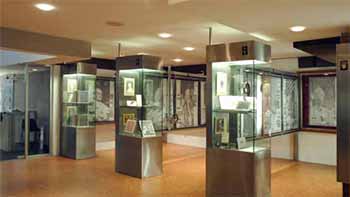Montecarotto – The Civic and Mail Art Museum
Established in 1984 thanks to donations from some of Italy’s most renowned masters of art. It also contains graphic works by Orfeo Tamburi, Ernesto Treccani, Pericle Fazzini, Umberto Mastroianni, Arnaldo Ciarrocchi, Francesco Rossini, Sepo and others. The museum collects Mail Art collections, namely art which promotes the circulation of small-sized works (drawings, CDs, small sculptures, etc.) via worldwide postal channels, by artists who interacted in free or themed initiatives. Unique in Italy. Truly unmissable









